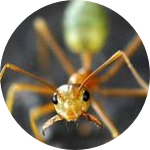Please wait...
About This Project
The mosquito A. aegypti is the main vector for dengue and zika viruses. This mosquito has developed resistance to common insecticides. We've shown that a biological control agent (a roundworm) can kill 85-100% of mosquito larvae. As a follow-up study we need to submit the roundworm to an “acid test” to verify its efficacy in urban settings. If this bioagent passes the test this could be another method to control the mosquito and reduce the spread of dengue, zika and urban yellow fever viruses.





